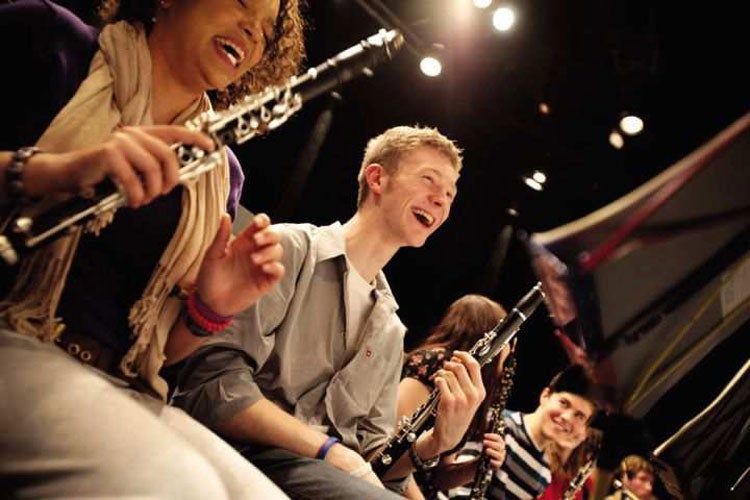National Youth Orchestra, Royal Festival Hall, London

The wheel of fashion never stays still, but it’s possible that the last seven days may leave an enduring residue, in the form of belated public acceptance that classical music can be as stylish and exciting as any race or any ball-game.
And we’ve seen a striking synergy between YouTube and the concert platform, with the Simon Bolivar Youth Orchestra of Venezuela attracting a million hits to their website after selling out the Royal Festival Hall ten months in advance. Screen is good, but live is best.
And it was good planning to put our own National Youth Orchestra on stage at the South Bank, the moment the Bolivars had vacated it: with memories fresh, we could make comparisons. The biggest difference is in age: while the Bolivars are in their twenties, many of the NYO players are still only fourteen. The other contrast is in provenance: while the Bolivars are the beneficiaries of a pioneering piece of social engineering – plucked from poverty and given intensive musical training – most of the NYO players are either at specialist schools, or fee-paying ones. And while the Bolivars present a rainbow reflection of their continent’s racial mix, not one black face was visible when the NYO took the stage: a familiar grouse, but not without relevance after twelve years of Labour government.
On the podium was Paul Daniel, visibly rejuvenated after his release from the cares of office at English National Opera: the sound which greeted his down-beat at the start of the overture to Ades’s ‘Powder Her face’ came with electrifying force. And as the orchestra negotiated the rapids of two movements of this sophisticated work, one forgot they weren’t professionals. Rachmaninov’s ‘Symphonic Dances’ may have been his ailing valediction to large-scale composition, but its vigour and freshness evoked exactly those qualities from this band: from the warmth of their leader’s tone, to the colour of the clarinets, and the brilliance of the brass, their performance was well-nigh faultless.
George Benjamin’s ‘Dance Figures’ was designed to give every instrument its moment in the spotlight, and they rose to this challenge too. And in this work, with its glittering transparency, they demonstrated a superiority over the Bolivars by maintaining a pianissimo background accompaniment of a kind the Venezuelans can’t yet produce. Finally, Ravel’s ‘La Valse’ suggested empty bravado, compulsively whirling limbs, and a dead-eyed race to destruction: a slight lack of precision at the outset was quickly remedied. No encores, no hurling of shirts into the audience, but we could indeed make a judgment: in a very close contest, the home team won on points.
Subscribe to Independent Premium to bookmark this article
Want to bookmark your favourite articles and stories to read or reference later? Start your Independent Premium subscription today.

Join our commenting forum
Join thought-provoking conversations, follow other Independent readers and see their replies